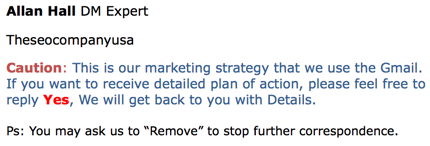Looking back, looking forward
Six years ago today I wrote here “Spam isn’t going away“, talking about systemic problems at Google, Cloudflare and Amazon and in India.
If I were writing it today I might mention Microsoft, Salesforce and ExactTarget as well as Google, and might stress Amazon less (mostly because all the Amazon spam sites tend to be hidden behind Cloudflare, so you don’t know they’re Amazon sites). And OVH, of course.
But the gist of the story hasn’t changed in six years, and the conclusion is as valid today as it was then:
There will be increasing volumes of B2B spam being sent for the foreseeable future, and there doesn’t seem to be much we can do to change that.
If your career involves filtering inbound spam – consumer, smb or enterprise – it seems your skills will be in demand for a long while yet.

